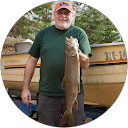Ontario Tree Diseases: Dutch Elm Disease
There are a number of common Ontario tree diseases that pose significant threats to our province’s tree populations. This article looks at one of the most prevalent and dangerous Ontario tree diseases – Dutch Elm Disease.
Ontario Tree Diseases: Dutch Elm Disease
Affected Trees: all species of Elm in Ontario, but particularly American or White Elm and Rock Elm
Is Dutch Elm Disease the most dangerous of Ontario tree diseases?
Out of all the Ontario tree diseases, Dutch Elm disease has proved to be one of the most devastating. Since reaching the province, it has spread rapidly through southern Ontario, killing thousands of native elms. This, combined with an aggressive tree felling project to save remaining elms, has nearly eliminated our entire population of native American elms.
What is Dutch Elm Disease?
Dutch Elm Disease (DED) is a fungal infestation caused by two species of fungi that have decimated the elm population in Canada.
Dutch Elm Disease affects all species within the elm genus (Ulmus). However, Dutch Elm disease has particularly impacted two of the three native elm species in Ontario. These are the White or American Elm (Ulmus americana), known for its towering stature and distinctive vase-shaped canopy and the Rock Elm (Ulmus fulva).
What does Dutch Elm Disease do to trees?
Dutch Elm disease will eventually kill the tree. The disease rapidly spreads and so Dutch Elm Disease has had a devastating effect on both individual trees and entire populations of trees.
While efforts have been made to manage and slow the spread of the disease, vigilance and proactive measures are crucial to protecting the remaining elm populations.
What causes Dutch Elm Disease in Ontario?
Dutch Elm Disease (DED) is caused by two closely related species of pathogenic fungi – Ophiostoma ulmi and Ophiostoma novo-ulmi. The latter is the most aggressive of the two and is the main cause of Dutch Elm Disease in Ontario today.


































